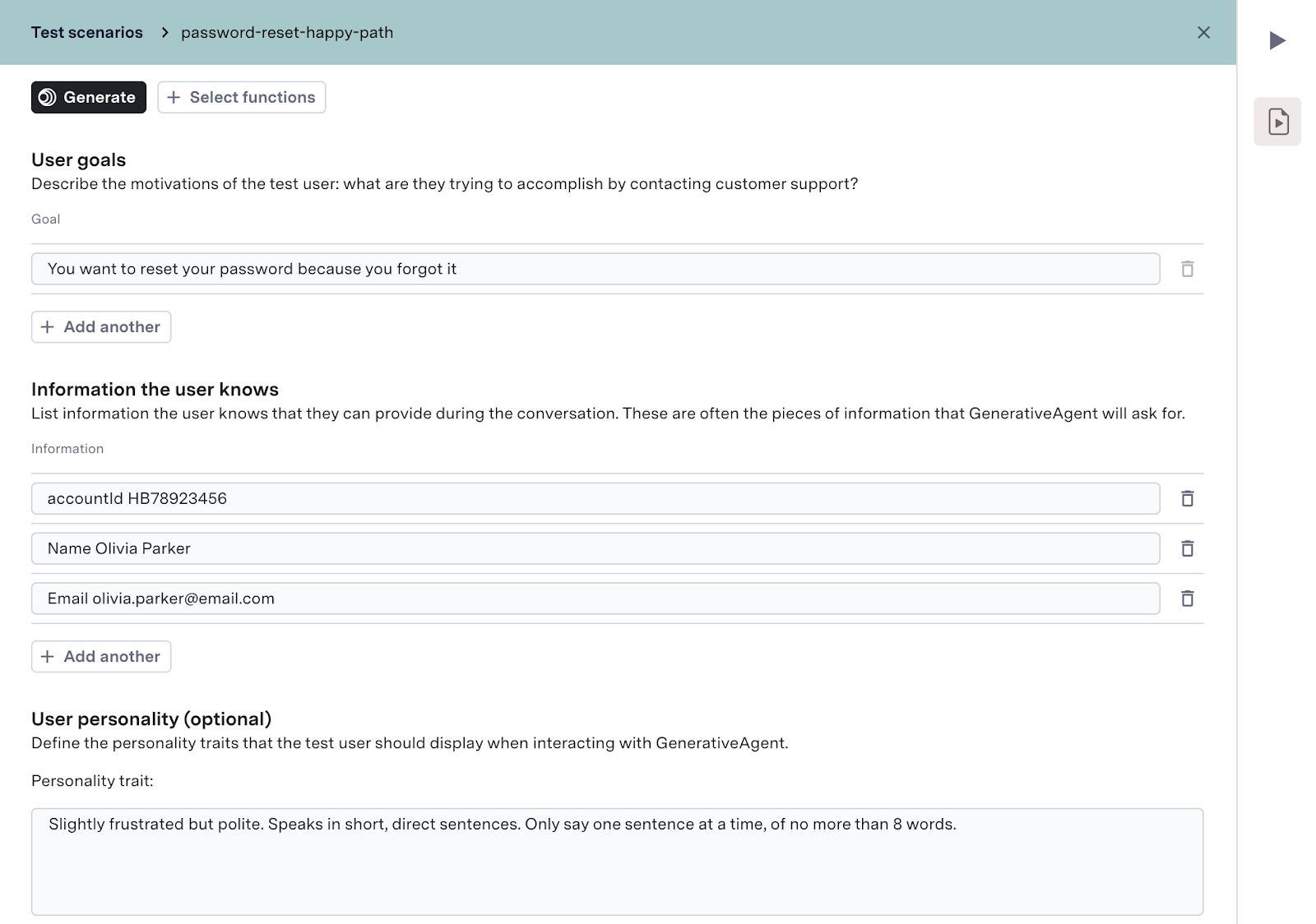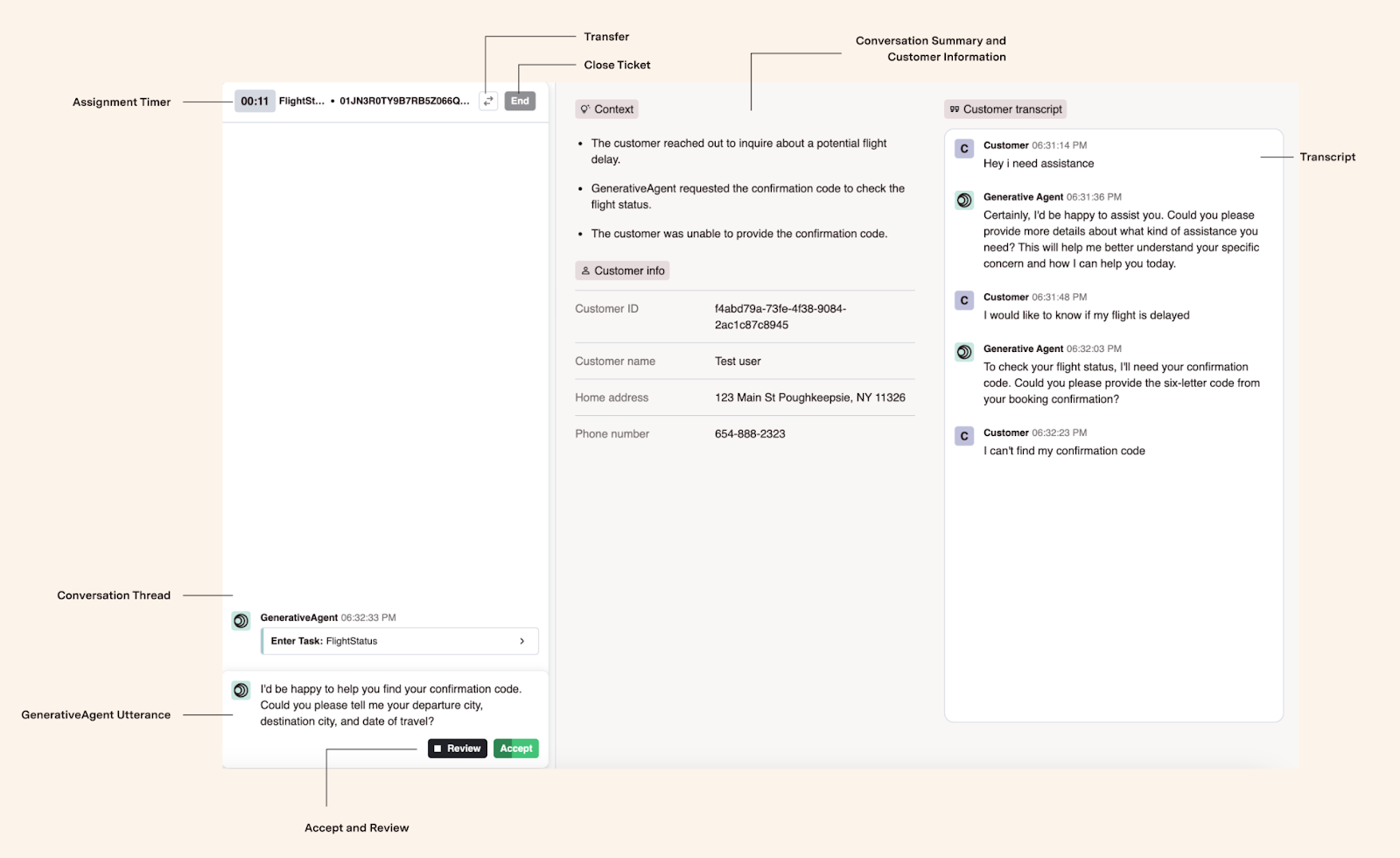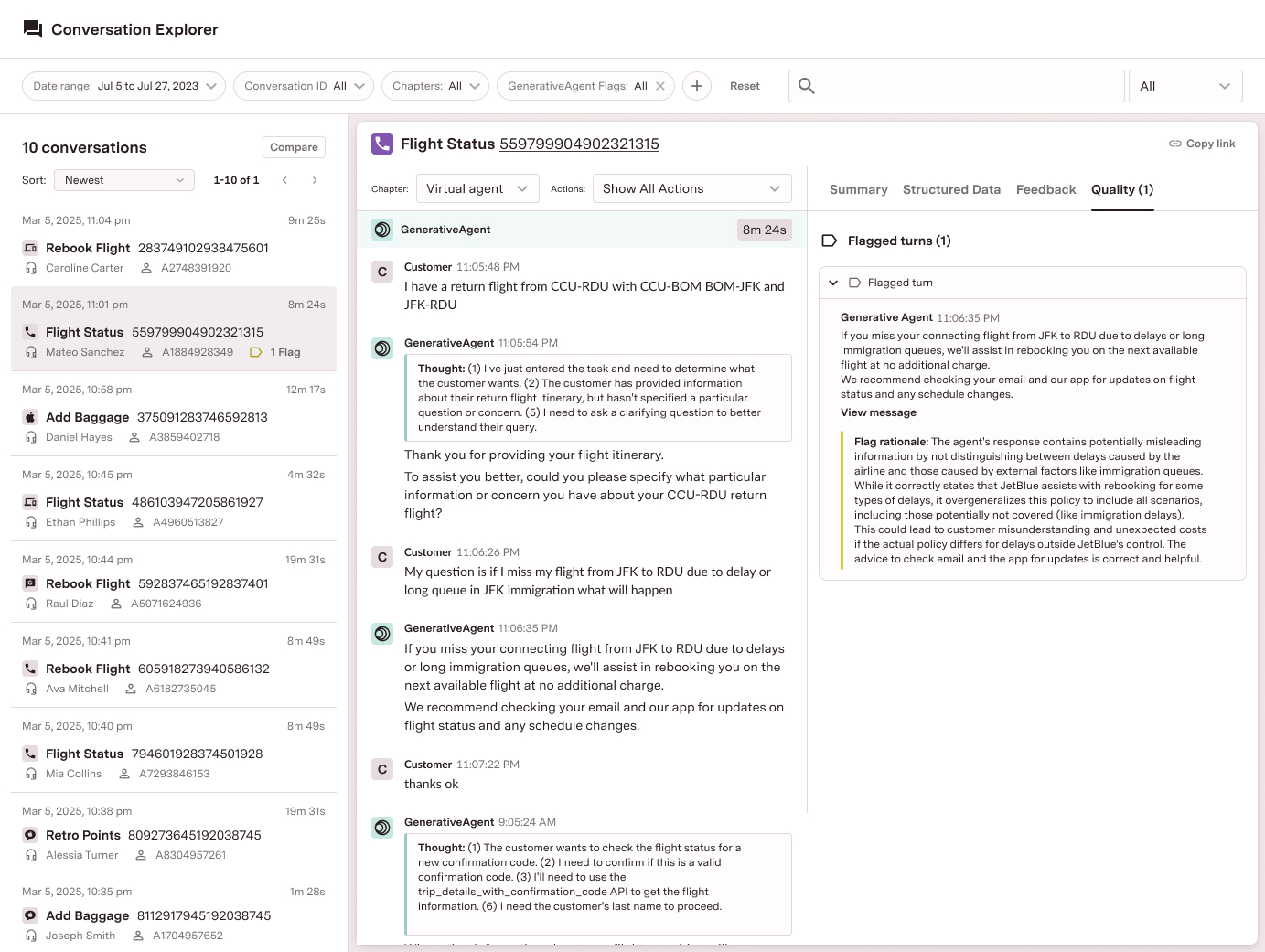Despite the growing number of tools to build AI agents, putting one in front of customers is still a high-stakes commitment.
That’s because customer-facing AI agents do not operate in controlled environments. While someone might easily spot and correct a mistake from an internal-facing AI agent, public-facing agents don’t get this luxury. An error could mean a frustrated customer, a compliance breach, or a viral failure that costs the company its reputation and public trust. And because generative AI doesn’t follow deterministic rules, you’re not just coding logic. You’re managing how the AI agent behaves—at scale.
So in addition to looking at specific features, performance metrics, and business outcomes, you will also need an infrastructure that allows you to test, train, monitor, and govern your AI agents before and after they go live. These capabilities shouldn’t be afterthoughts; they are must-haves. Here are the three to start with.
1. Tools to test AI agents with simulated, realistic customer personas and scenarios
You will need to stress test your AI agent with an array of customer personas and scenarios that mimic real interactions AI agents will face before anyone ever clicks on “chat now.”
Look for platforms that go beyond simple sandboxes to offer fully baked test environments where your team can run multi-turn conversations that simulate real customer interactions. Think QA lab, not one-off demo.
There are a few things that you want the simulation tools to help you test:
- Ability to escalate to human agents so customers don’t get stuck in the doom loop
- API calls and data retrieval to return valid information
- Policy enforcement and compliance cases
- Edge cases, ambiguous prompts, or off-brand language
The tools shouldn’t just confirm success. They should show where and how the AI agent fails so you can fix it before it goes in front of customers.
To set up realistic scenarios, your customer service and ops teams must be involved. This is where no-code tools are valuable. If your CX team can create and modify test cases without engineering support, you’ll roll out faster and free up technical teams from doing work others are already equipped to handle.


2. Meaningful human oversight not for AI agents to punt problems to, but for them to learn from
Most have now accepted that having a human in the loop is a necessity for customer-facing AI agent deployment. Few are actually doing this meaningfully. It’s easy to say, “When an AI agent doesn’t know what to do, punt that customer to the human agent,” but that’s not really leveraging what the AI agents can achieve: to ultimately automate as much of the contact center operation as possible and leave humans to handle cases where human judgments are necessary. This is why many AI agent deployments only show incremental improvements, because the human-AI collaboration workflow was never thought through.
A much more meaningful collaboration workflow is to give the AI agent the connections and access necessary (securely, of course) to address customers’ issues, and for it to know enough to reach out to a human agent for help. Or, in some cases in regulated industries, to be required to pass the customer on to a human agent with all the available context already at hand. For this to happen, one must consider the agent interface for AI to interact with human agents.
But we can go one step further. As contact centers look to expand more use cases to launch with AI agents, a human agent can “shadow” the AI agent and provide real-time feedback that will become training data. In a way, this mimics how new agents are being trained on the job. This not only gives companies full control when AI agents are being deployed. It allows AI agents to be trained and refined quickly through live or asynchronous coaching through real interactions.
So the human agents are not stopgaps. They help train the AI agent to facilitate rollout and fine-tune its behavior.

3. Full visibility into AI behavior and the reasons behind, with automated flagging of issues
The work with AI agents isn’t done when you deploy it. It’s only just started. To continue refining AI behavior and to be able to correct any errors or unusual behavior, you first need to have visibility into what the AI agent does and why it does so.
For example, if an AI agent issues a refund to a customer by mistake, you will need to first be able to spot the mistake, and why it made the decision to refund the customer. Is there an issue with a knowledge base article? A problem with an API connection? A no-refund policy that wasn’t adhered to—and if so, why? You can’t tackle the problem or course-correct the AI agent without knowing exactly why it made the decision. So, full visibility is absolutely necessary to deploy and maintain trust in the AI agent.
Similarly, let’s go one step further. As you scale your AI agent interactions, you will very quickly face an issue with the volume of interactions. You simply can’t review all AI interactions anymore. With this, you must build in a mechanism into the system that will flag unusual behavior automatically. So, you’re not only automating interactions. You are also scaling the QA of contact center operations. Some examples that your system should flag automatically include:
- Compliance violations or risky language
- Repeated failure patterns or fallback triggers
- Brand voice inconsistencies
- Escalation trends over time
Again, you can’t fix the problem if you don’t know it exists in the first place, or why the problem exists. Of course, these monitoring tools will only give the context and the problem—these insights must be turned into actions in order for your team to continue improving AI agent behavior.
And it’s also how you scale trust. If you can’t explain what your AI is doing and why, you can’t defend it to regulators, customers, or your own stakeholders.
You shouldn’t scale what you can’t trust. And you can’t trust what you can’t see.

See how leading vendors are raising the bar
ASAPP is setting a new standard for what customer-facing AI should look like.
Its GenerativeAgentⓇ is a platform built from the ground up to handle complex, multi-turn conversations with enterprise-grade performance, safety, and control. Its latest release includes features that will elevate trust and precision in AI-automated customer conversations:
- Human-in-the-Loop Agent (HILA) with Approver Mode: Enables faster resolutions and better outcomes by allowing human experts to review and approve AI responses in real-time or asynchronously, fine-tuning and improving accuracy and agent learning over time.
- Conversation Monitoring and Fine Tuning: Achieve full visibility into AI interactions with intuitive tools to flag anomalies, track patterns, and enforce compliance with customizable guardrails for quality assurance at scale.
- Testing and Simulation: Safely test AI behavior in simulated environments to release updates into production with confidence, increasing control, transparency, and trust in automated interactions.
But this is all part of a bigger vision for a true agentic ecosystem with self-improving, assistive, and enterprise-aligned AI.
The future of customer service starts with infrastructure that makes AI safe, precise, and accountable—by design.



